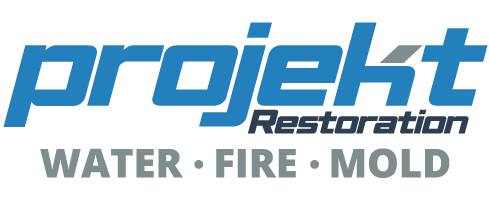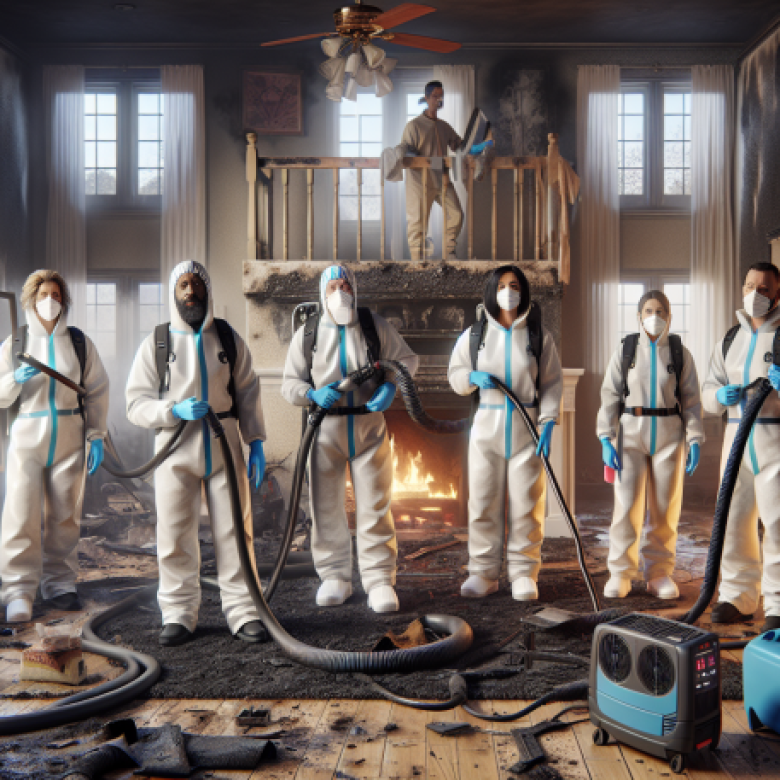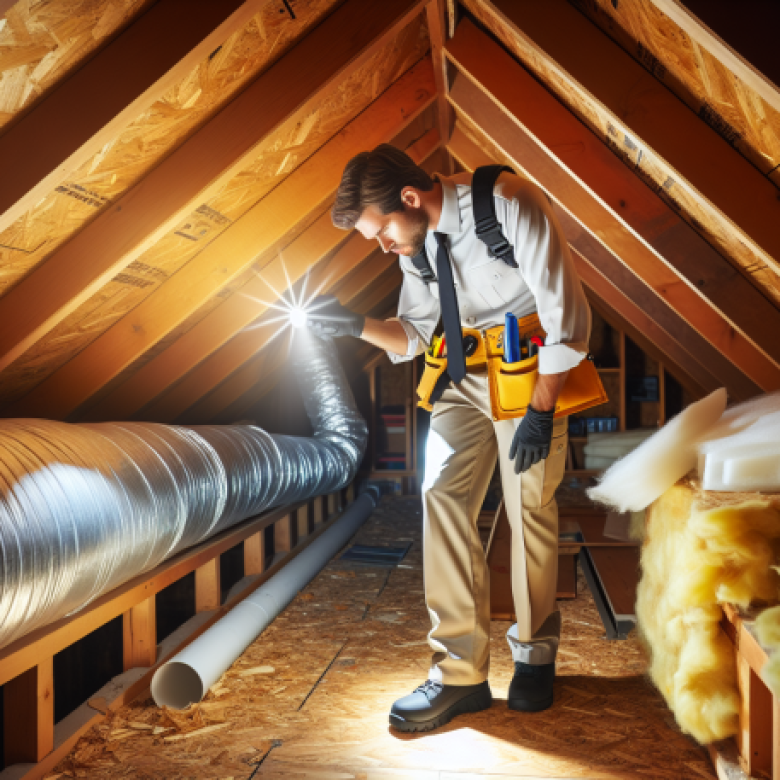Infrared thermal imaging is revolutionizing the restoration industry, offering unparalleled benefits for professionals tackling water, fire, and mold damage. At Projekt Restoration, we understand the critical role that advanced technology plays in effective restoration. By utilizing infrared thermal imaging, our team can quickly identify hidden moisture, detect heat patterns, and assess structural integrity without invasive procedures. This innovative approach not only enhances the accuracy of our mold assessments and biohazard cleanup but also streamlines the reconstruction process, ensuring that your property is restored efficiently and effectively. Discover how infrared thermal imaging can transform your restoration experience and provide peace of mind during challenging times.
Understanding Infrared Thermal Imaging Technology

Infrared thermal imaging technology is a powerful tool that enhances the efficiency and effectiveness of restoration processes. This non-invasive method utilizes infrared cameras to detect temperature variations in surfaces, allowing professionals to identify hidden issues such as moisture intrusion, insulation gaps, and electrical faults. By visualizing heat patterns, restoration experts can pinpoint problem areas without the need for destructive testing, saving time and reducing costs.
One of the key benefits of infrared thermal imaging is its ability to quickly assess the extent of water damage. According to the Institute of Inspection, Cleaning and Restoration Certification (IICRC), early detection of moisture can prevent mold growth and structural damage, which can lead to significant financial losses.
Furthermore, infrared technology is invaluable in fire damage restoration. It helps identify hotspots and areas of potential flare-ups, ensuring that restoration teams can address all risks effectively.
In addition to its practical applications, infrared thermal imaging contributes to a more thorough and accurate restoration process. As noted by industry experts, “Thermal imaging is not just a tool; it’s a game-changer in restoration.”
For more information on how infrared thermal imaging can benefit your restoration project, visit our infrared thermal imaging page or contact us for a consultation at our contact page. Explore our calculator for estimating restoration costs.
For further reading, consider these resources:
- Institute of Inspection, Cleaning and Restoration Certification
- Thermography Services
- International Association of Certified Home Inspectors
Early Detection of Water Damage

Water damage can lead to significant structural issues and health risks if not addressed promptly. Early detection is crucial in mitigating these problems, and infrared thermal imaging technology plays a vital role in this process. This non-invasive method allows restoration professionals to identify hidden moisture behind walls, under floors, and in ceilings without causing any damage to the property. By detecting temperature variations, infrared cameras can pinpoint areas where water has infiltrated, enabling quicker and more effective remediation.
Utilizing infrared thermal imaging not only speeds up the assessment process but also helps in preventing further damage. For instance, identifying leaks early can save homeowners from costly repairs and extensive renovations. Additionally, this technology aids in assessing the effectiveness of dehumidification efforts, ensuring that all moisture is effectively removed from the environment.
Moreover, early detection can significantly reduce the risk of mold growth, which can pose serious health hazards. By addressing water issues promptly, property owners can maintain a safe and healthy living environment. For those facing water damage challenges, seeking professional help is essential. Contact our team for expert assistance in water damage restoration and learn more about how infrared thermal imaging can benefit your property.
Identifying Hidden Mold Growth

Mold growth can often remain hidden behind walls, under floors, or in other concealed areas, posing significant health risks and structural damage if left unchecked. Infrared thermal imaging is a powerful tool in the restoration industry that helps identify these hidden mold infestations. By detecting temperature variations in building materials, infrared cameras can reveal moisture accumulation that may not be visible to the naked eye. This technology allows restoration professionals to pinpoint the exact locations of mold growth, facilitating targeted remediation efforts.
Using infrared thermal imaging not only enhances the efficiency of mold assessments but also minimizes the disruption to your property. By accurately identifying moisture sources, restoration teams can implement effective dehumidification strategies and prevent further mold proliferation. This proactive approach not only protects your health but also preserves the integrity of your home or business.
Additionally, infrared imaging can be invaluable during the mold assessment process, ensuring that no hidden areas are overlooked. For those facing potential mold issues, utilizing infrared technology is a smart investment in safeguarding your property. If you suspect mold growth in your space, consider reaching out for professional assistance to ensure a thorough and effective restoration process.
Enhancing Energy Efficiency in Restorations
Incorporating infrared thermal imaging into restoration projects significantly enhances energy efficiency, leading to substantial long-term savings. This advanced technology allows restoration professionals to detect hidden moisture, air leaks, and thermal inefficiencies that are often invisible to the naked eye. By identifying these issues early, property owners can address them promptly, preventing further damage and reducing energy consumption.
When moisture is present in walls or ceilings, it can lead to mold growth and structural deterioration, which not only compromises the integrity of the building but also increases energy costs due to inefficient heating and cooling. Utilizing infrared thermal imaging during the restoration process enables technicians to pinpoint problem areas accurately, ensuring that repairs are targeted and effective.
Moreover, this technology supports sustainable practices by minimizing waste and optimizing resource use. By enhancing the overall energy efficiency of a building, infrared thermal imaging contributes to a healthier environment and lower utility bills. Homeowners and businesses can benefit from improved comfort levels and reduced energy expenses, making it a wise investment in the long run. For those interested in maximizing their restoration efforts, consulting with experts can provide tailored solutions to enhance energy efficiency and overall property value. Explore more about our services or get in touch through our contact page for personalized assistance.
Streamlining the Restoration Process
Infrared thermal imaging is revolutionizing the restoration industry by significantly enhancing the efficiency and accuracy of damage assessments. This advanced technology allows restoration professionals to detect hidden moisture, heat loss, and structural issues that are not visible to the naked eye. By identifying these problems early, restoration teams can implement targeted solutions, reducing the overall time and cost of the restoration process.
One of the key benefits of infrared thermal imaging is its ability to streamline the identification of water damage. Traditional methods often involve invasive techniques that can disrupt the property and delay restoration efforts. In contrast, infrared imaging provides a non-invasive approach, allowing professionals to pinpoint the exact location of moisture intrusion without causing additional damage. This leads to quicker water damage assessments and faster remediation.
Moreover, infrared thermal imaging aids in the detection of mold growth, which is crucial for maintaining a safe environment. By utilizing this technology, restoration experts can conduct thorough mold assessments and ensure that all affected areas are treated effectively. This proactive approach not only enhances the quality of restoration work but also minimizes the risk of future issues, ultimately leading to a more efficient and effective restoration process. For those seeking to learn more about how infrared thermal imaging can benefit their restoration projects, contact us today.
Cost-Effectiveness of Infrared Inspections
Infrared thermal imaging is a powerful tool in the restoration industry, offering significant cost-effectiveness for property owners and restoration professionals alike. By utilizing advanced infrared technology, inspectors can quickly identify hidden issues such as moisture intrusion, electrical faults, and insulation deficiencies without invasive procedures. This non-destructive approach minimizes the need for extensive repairs, ultimately saving time and money.
One of the key advantages of infrared inspections is their ability to detect problems early, preventing more extensive damage that could lead to costly repairs. For instance, identifying water damage early can mitigate the risk of mold growth, which can be expensive to remediate. By addressing issues promptly, property owners can avoid the high costs associated with extensive restoration work, such as reconstruction or dehumidification services.
Additionally, infrared inspections can enhance the efficiency of restoration projects. By pinpointing the exact location of issues, restoration teams can focus their efforts where they are needed most, reducing labor costs and minimizing disruption to the property. This targeted approach not only streamlines the restoration process but also improves overall customer satisfaction. For those interested in learning more about how infrared thermal imaging can benefit their restoration needs, consider reaching out through our contact page for expert advice and assistance.
Improving Safety for Restoration Professionals
Infrared thermal imaging is revolutionizing the restoration industry by significantly enhancing safety for professionals on the job. This advanced technology allows restoration experts to detect hidden moisture, heat, and potential hazards without invasive procedures. By identifying issues such as water damage or electrical faults early, professionals can mitigate risks associated with mold growth or structural failures, ensuring a safer working environment.
One of the primary benefits of infrared thermal imaging is its ability to pinpoint problem areas quickly and accurately. This not only saves time but also reduces the physical strain on restoration workers who would otherwise need to conduct extensive manual inspections. Furthermore, the use of thermal imaging minimizes the need for demolition, preserving the integrity of the property and reducing exposure to hazardous materials.
In addition to improving safety, infrared thermal imaging aids in effective mold assessment and moisture detection, which are critical in preventing health risks associated with mold exposure. Restoration professionals can also utilize this technology for dehumidification processes, ensuring that environments are returned to safe conditions more efficiently. By integrating infrared thermal imaging into their workflows, restoration teams not only enhance their safety protocols but also improve overall project outcomes, making it an invaluable tool in the restoration process.
In conclusion, infrared thermal imaging has emerged as a transformative tool in the field of restoration, offering a multitude of benefits that enhance efficiency, accuracy, and safety. By enabling professionals to detect hidden moisture, identify heat loss, and assess structural integrity without invasive methods, this technology not only streamlines the restoration process but also minimizes potential damage and costs. The ability to visualize temperature variations provides invaluable insights that traditional methods may overlook, ensuring that restoration efforts are both effective and thorough. As the industry continues to evolve, embracing innovative solutions like infrared thermal imaging will undoubtedly lead to improved outcomes for both restoration professionals and their clients. By investing in this advanced technology, restoration experts can enhance their service offerings, ultimately contributing to more sustainable and successful restoration practices.





